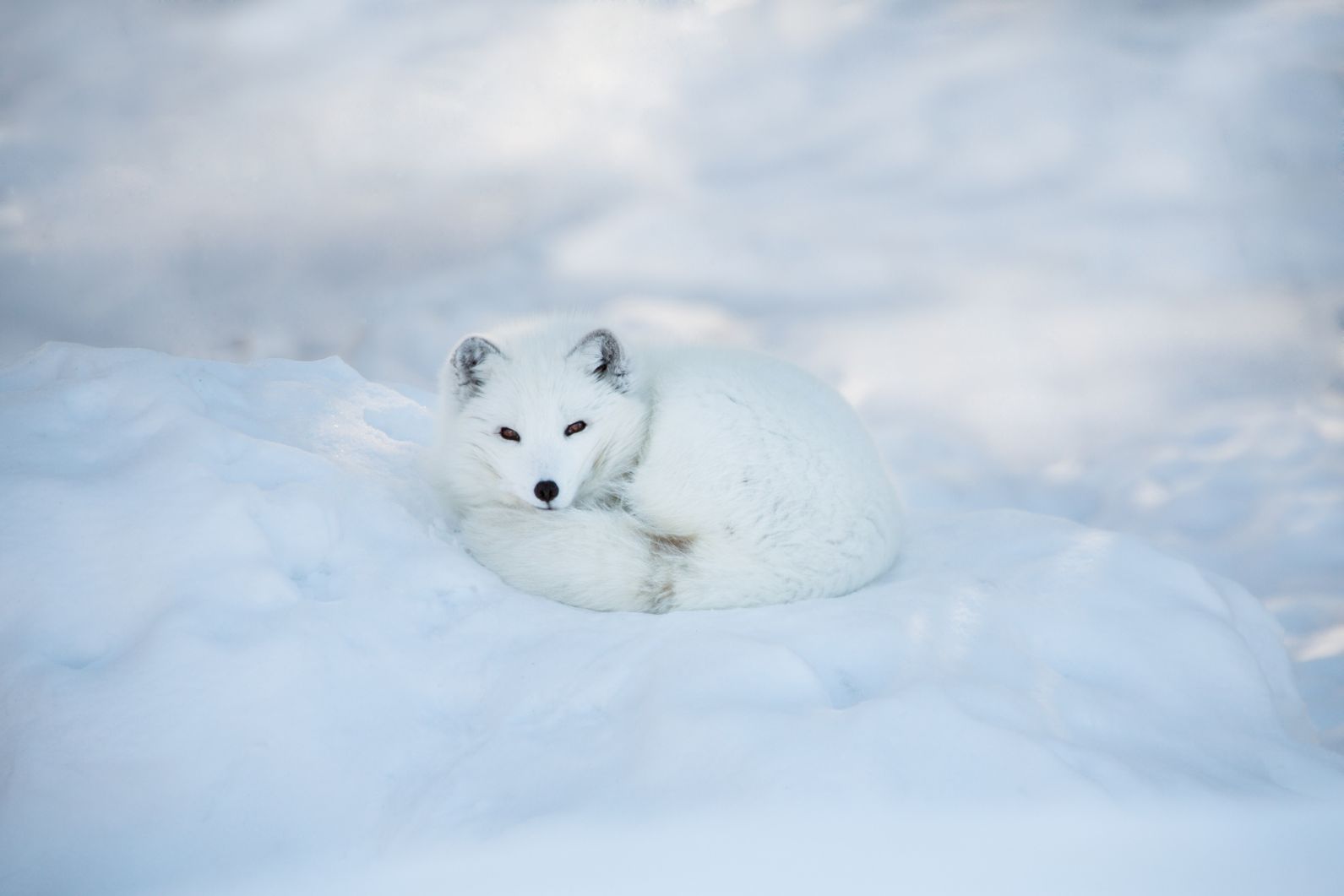There is an absolute abundance of wildlife in Norway, and indeed a plethora of vibrant wildlife in the Norwegian fjords. To cover all of the animals of Norway in one article would require that article to be book-length. After all, this is a land of forests, fjords and ferocious mountains, which extends deep into the Arctic Circle and includes world famous islands, from Lofoten to Svalbard.
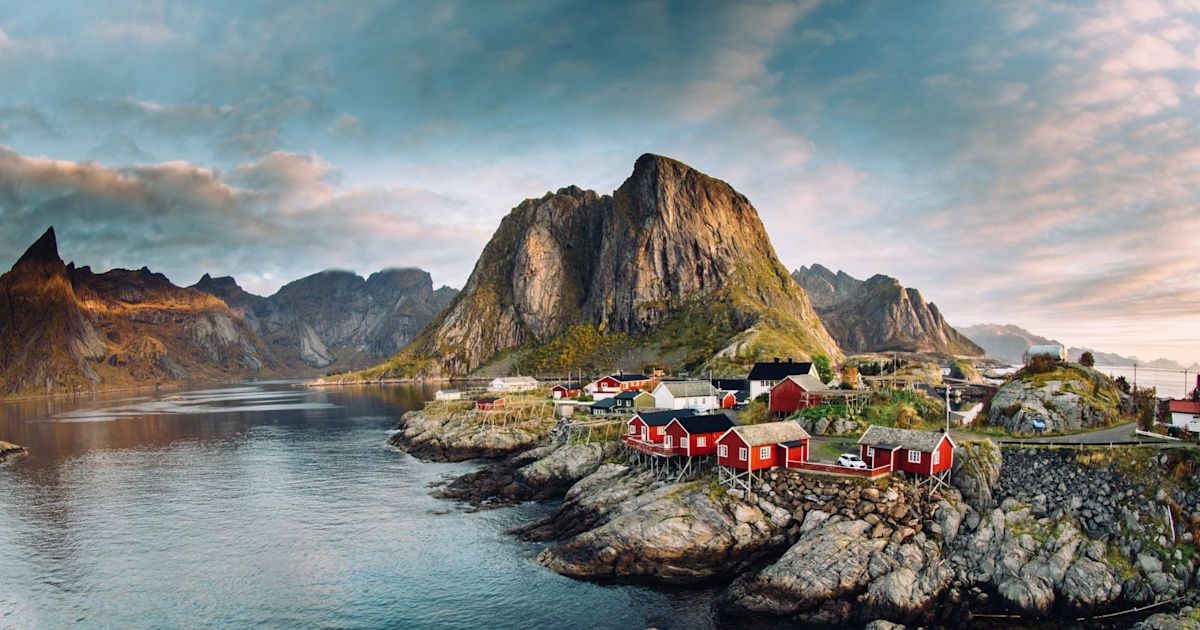
What we’re going to do here is provide an overview of the animals that can be found in Norway. We'll look at some of the most charismatic species of animals in Norway and where you can see them - from reindeer, wolves and arctic foxes to polar bears, whales and white-tailed (sea) eagles. As superfans of the Norwegian fjords, we’ll also look specifically at what animals you can see while you’re out kayaking or walking in the fjords of Norway.
What Animals Can Be Found in Norway?
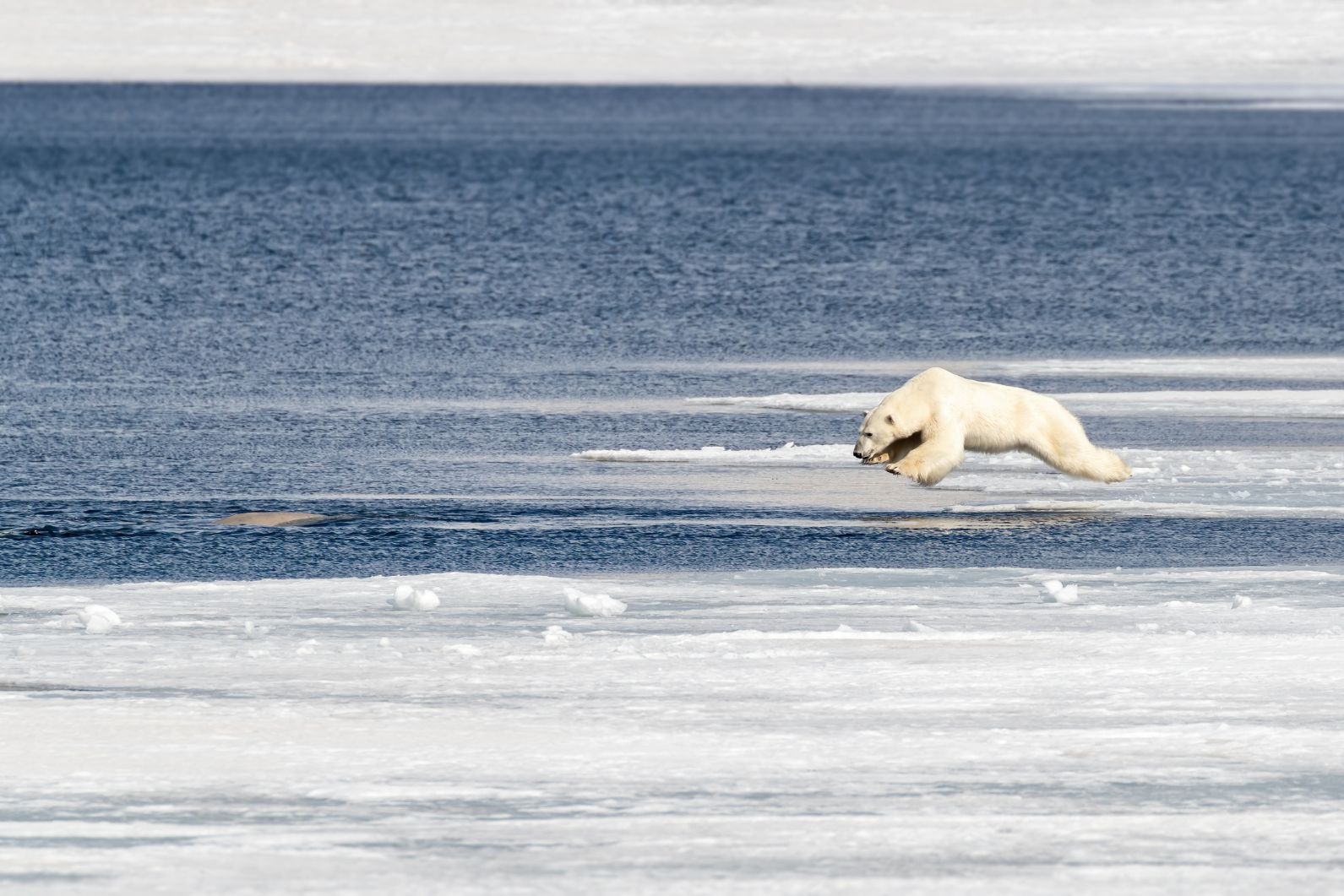
A study from the Norwegian Biodiversity Information Centre in 2015 found that there were 43,705 species of animals, fungi and plants in Norway - including 28,705 species of animals.
We’d need a whole lot of your time to get through all of those, so what we’ve done here is break it down into three categories: land mammals, birds, and water-based goodness. Within those, we’ve highlighted five particularly charismatic species, and where and when you can see them.
Of course, animals move about on their own schedules and not that of the tourism board, so regretfully, an animal sighting is never guaranteed.
Land Mammals in Norway
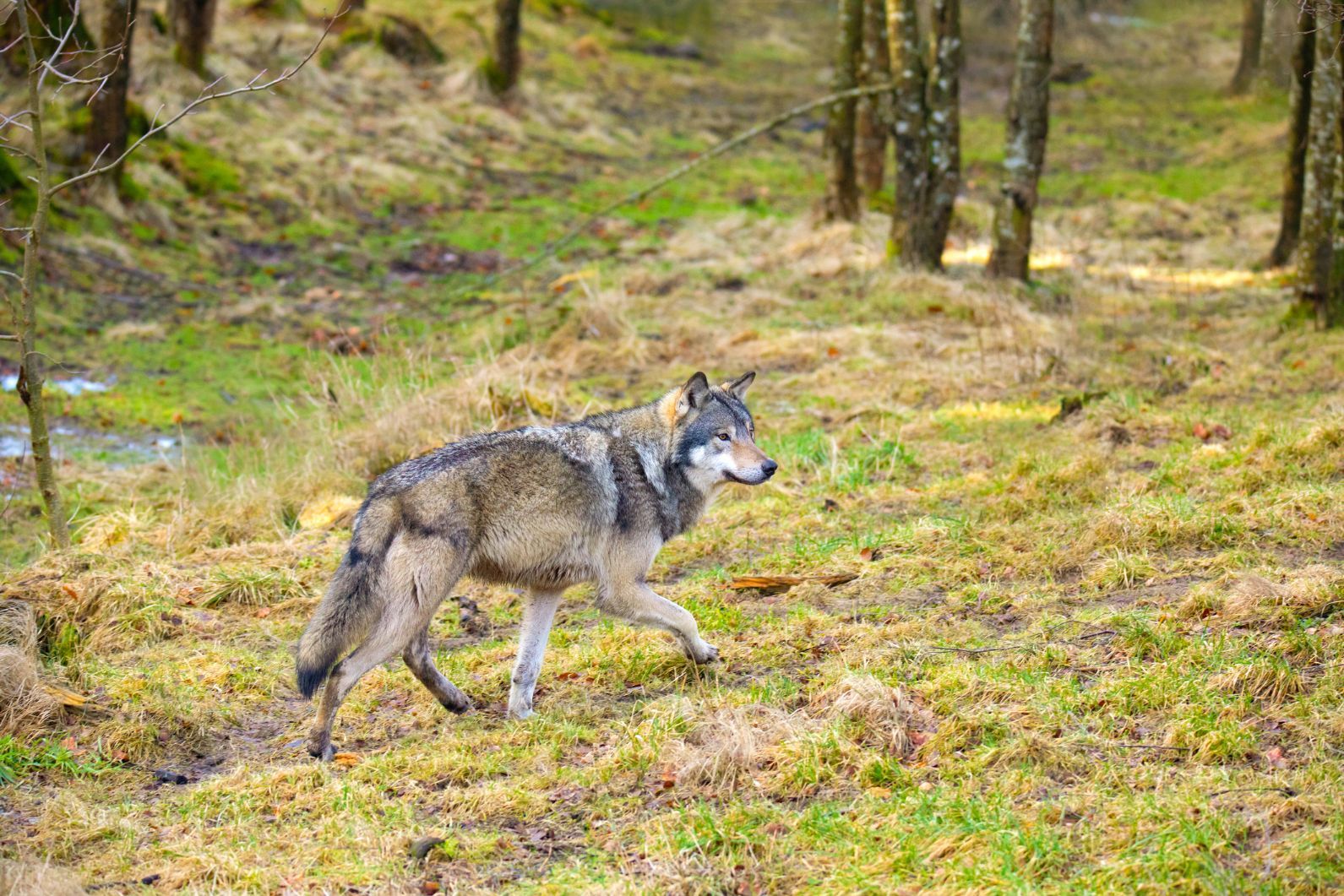
Wolf
There isn’t a huge population of wolves in Norway, but this keystone species - which often arrives in Norway via migration from Sweden - does number over 100. They can be found in designated wolf zones in the southeast of the country, which is on the border with Sweden. The biggest danger to these often-villainised animals is poaching. Wolves have a huge, positive impact on the environment, preying on animals which creates food for other species, while naturally controlling populous species (specifically elk).
Where to see: The wolf zones of Norway are on the southeast coast with Sweden.
When to see: Winter. It’s easier to pick the wolves out against the snow.
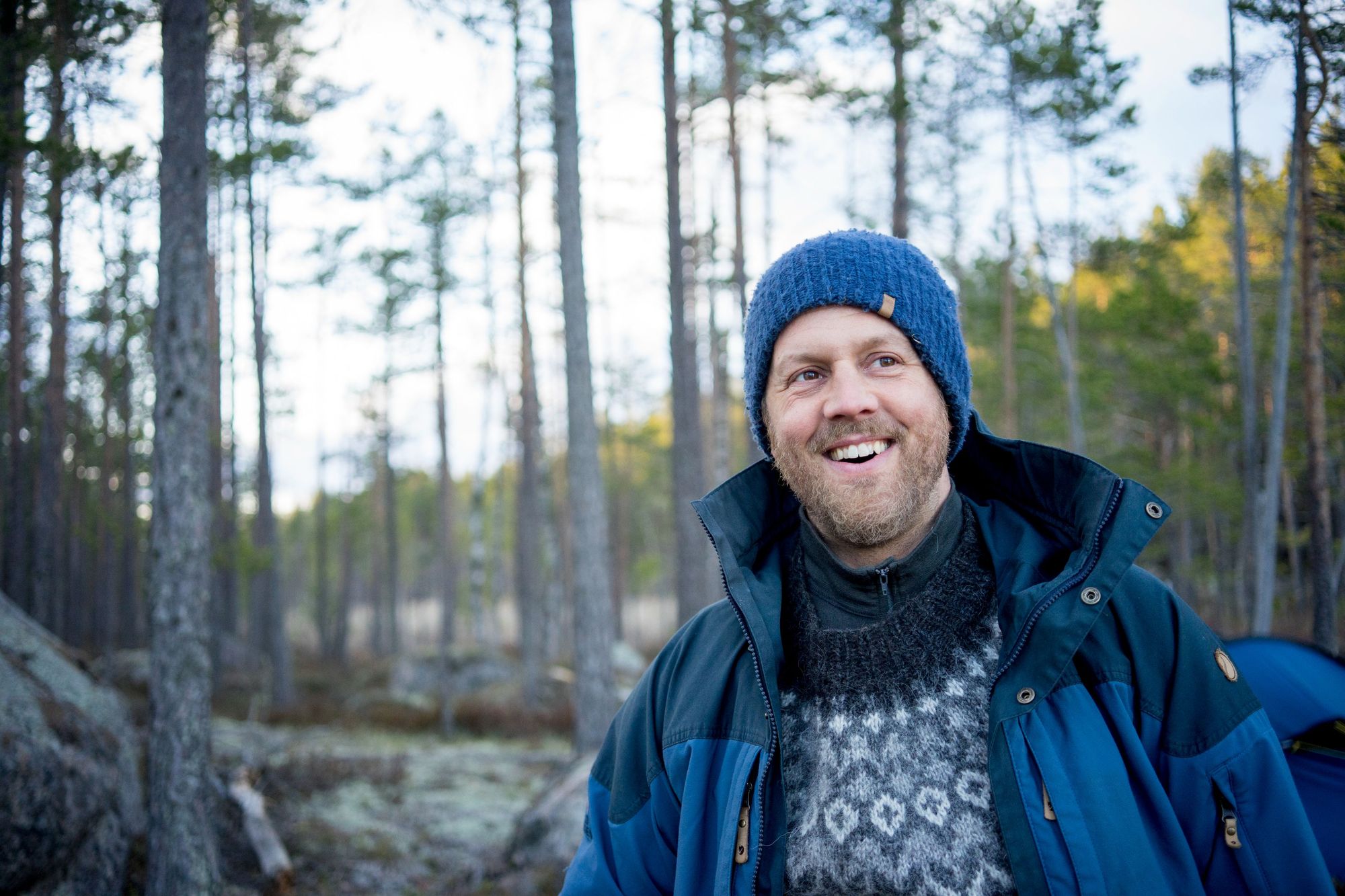
Reindeer
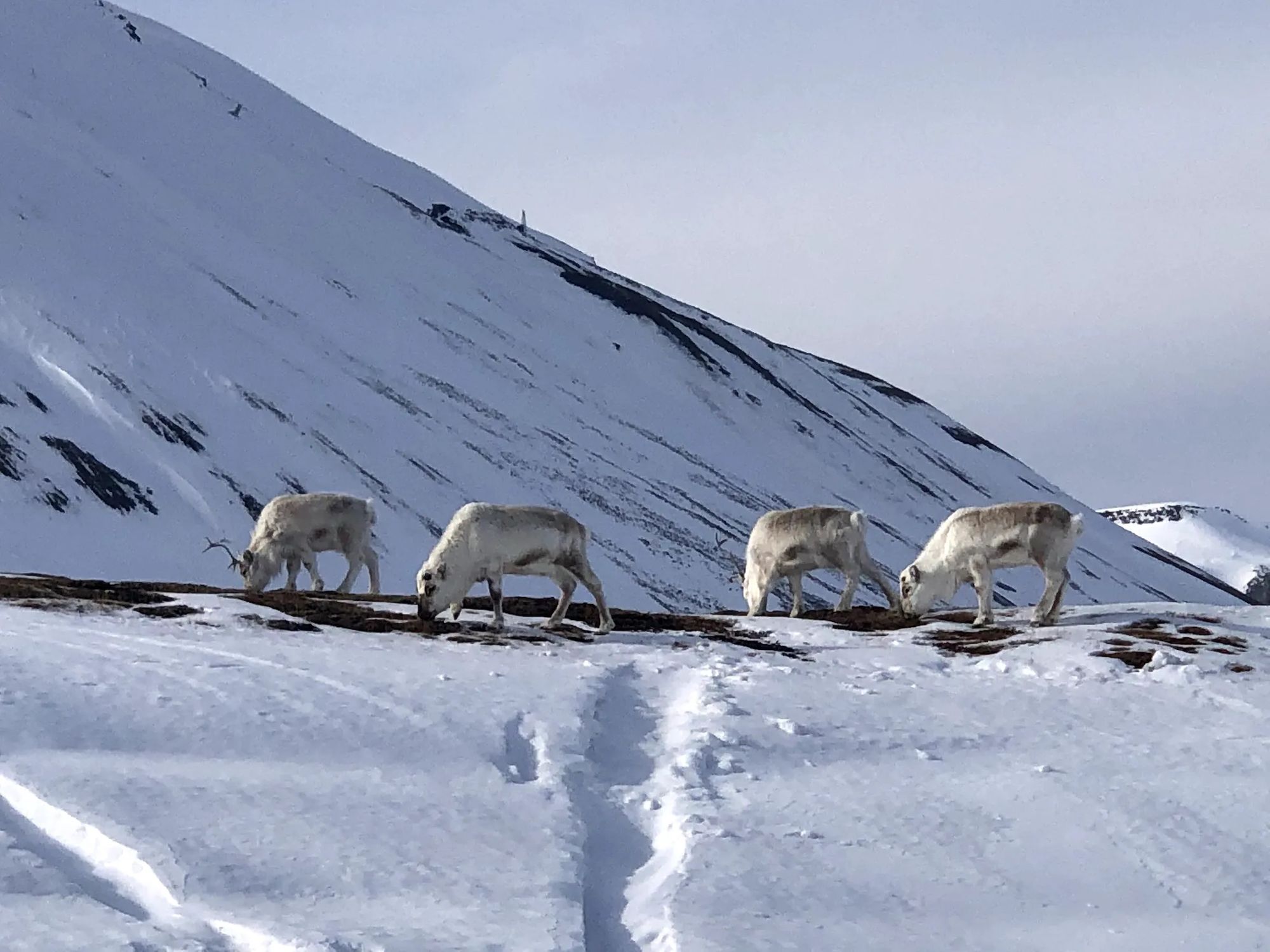
Santa’s favourite mammal is widespread in Norway. There are wild reindeer populations in separate management areas in southern Norway, and there’s also more on Svalbard - plus privately-owned populations around the country. There’s over 25,000 in winter, with the largest population being in Hardangervidda, Norway’s largest national park, where you’ll find between 6,000 and 7,000 reindeer.
Where to see: Hardangervidda National Park.
When to see: The rutting season, lasting around three weeks from the start of October, is the easiest time to see wild reindeer.
Arctic Fox
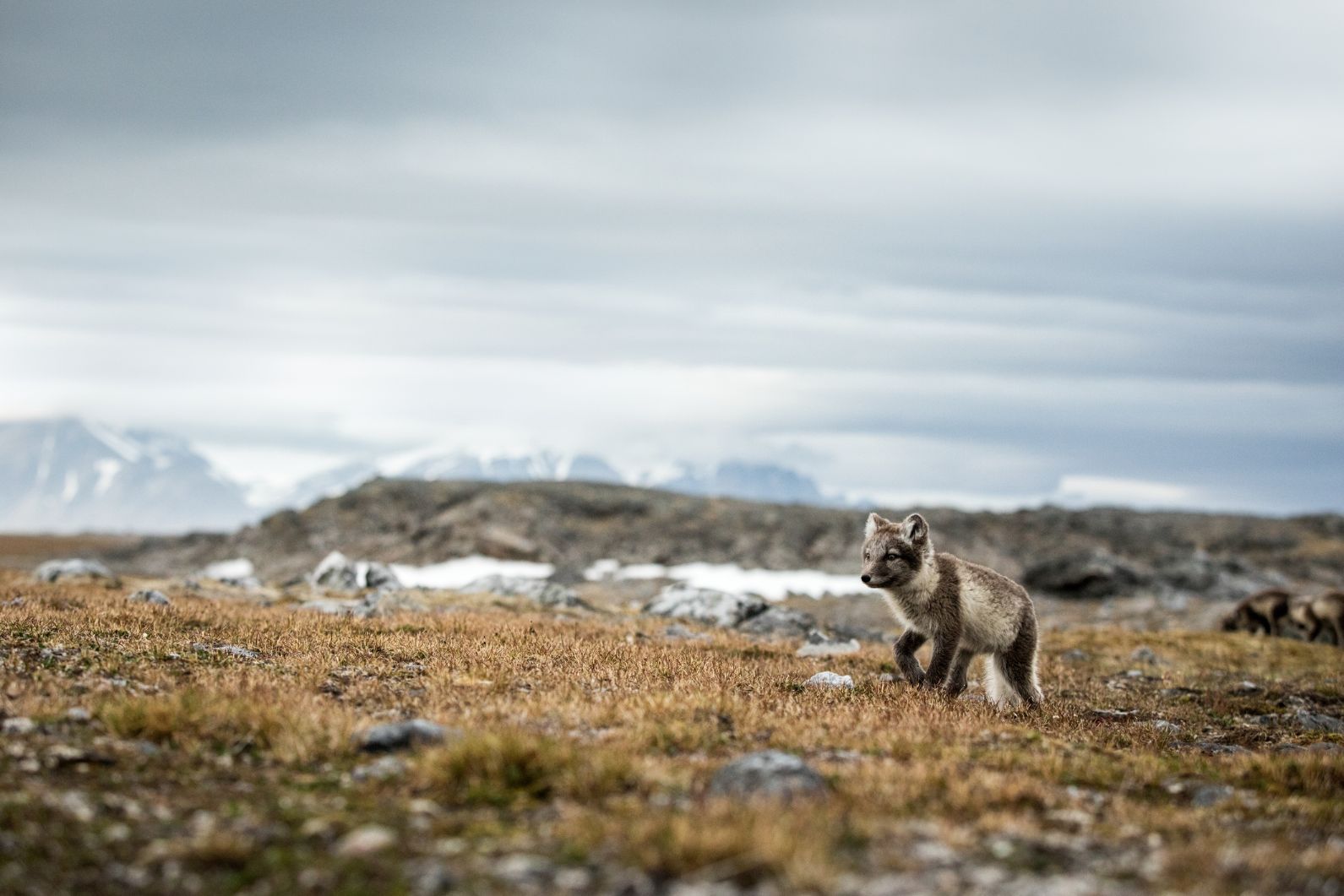
The frankly adorable Arctic fox can be found on Norway’s mountains and, naturally, in the Arctic. They can be found all over the tundra, and in Svalbard, that means it is possible to see one of the little critters out anywhere. They are rare though. There’s only around 300, with work ongoing to increase the population. When food is scarce, you can actually find Arctic foxes following polar bears, and hoping to scavenge on the scraps that the bears leave behind.
Where to see: Svalbard, or Børgefjell and Saltfjellet-Svartisen National Parks.
When to see: The foxes can be spotted any time of year, but in summer their fur darkens. They're no less beautiful then, but to try and see an Arctic fox in all its fluffy, white glory, come between November and March.
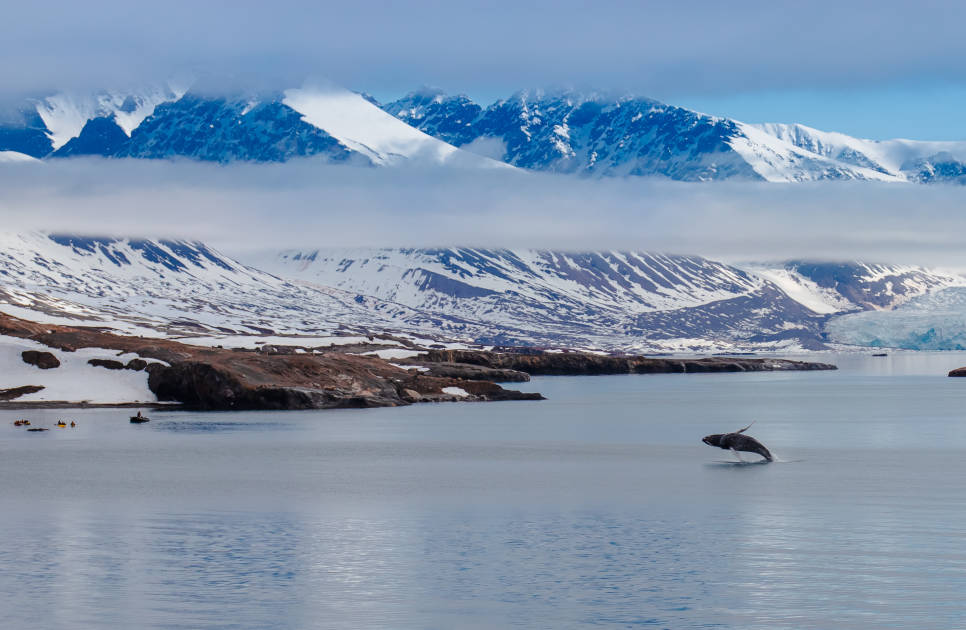
Musk Ox
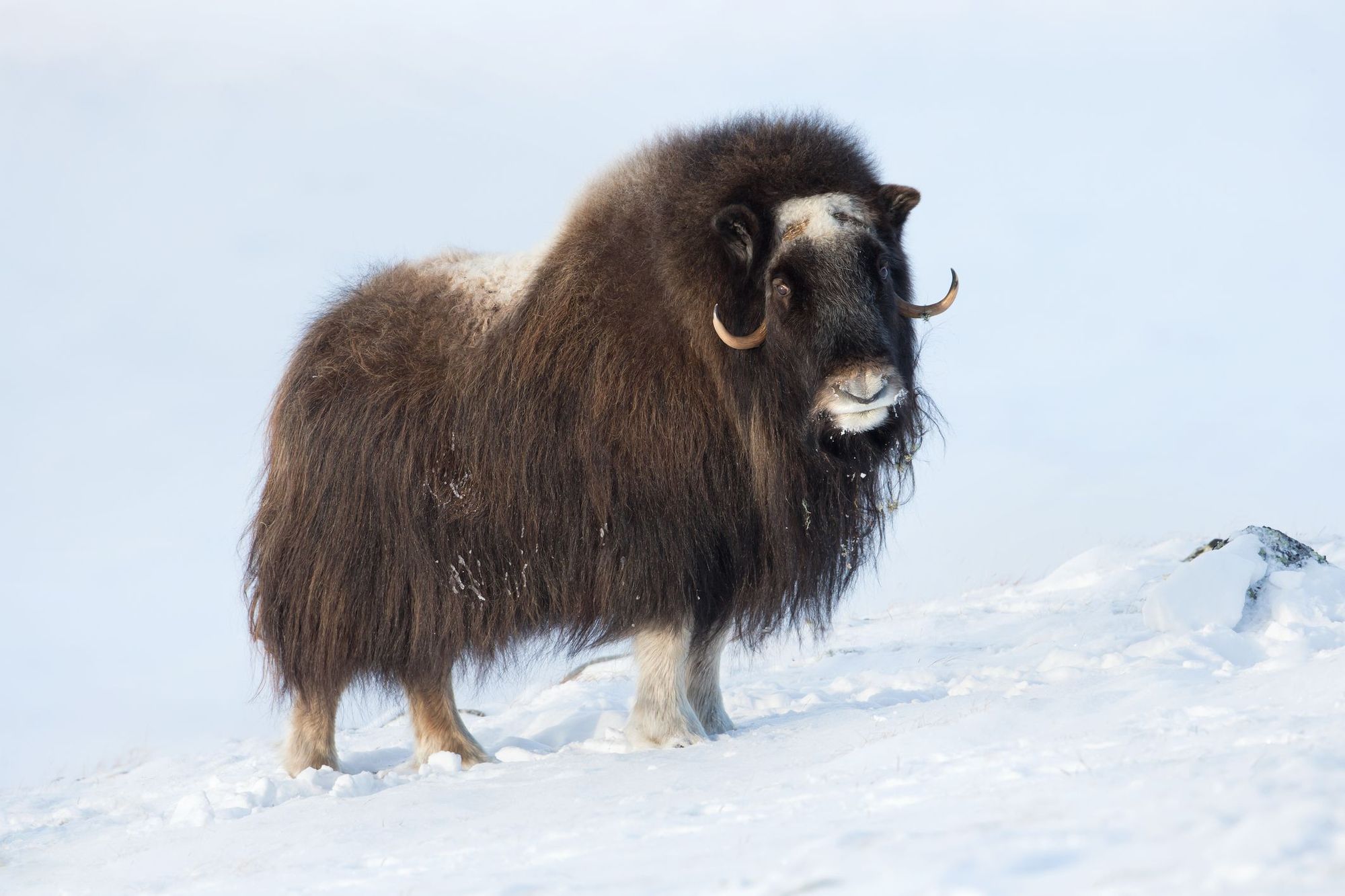
These sublime animals have the appearance of a prehistoric beast, with curled horns and huge coats. Dovrefjell National Park in Norway is one of the only places in the world where you can see these animals in their natural environment. They weigh up to 400kg and graze on grass and plants. In winter, they use their hooves to cut through the snow to access this, which in turn makes it easier for other small animals to access the grass - and for nearby carnivores to hunt.
Where to see: Dovrefjell National Park.
When to see: Winter. The huge animals are easy to spot against a white background.
Polar Bear

The famous signs around the Svalbard archipelago, beneath the picture of a polar bear, read “Gjelder hele Svalbard” - meaning “applies to all of Svalbard”. This is one of the only spots in the world where you can spot these majestic creatures. These animals use ice floats to capture their prey, and can swim for days at a time, but climate change is having a huge impact on their hunts.
Where to see: Svalbard.
When to see: May-September, when the midnight sun reigns supreme over Svalbard.
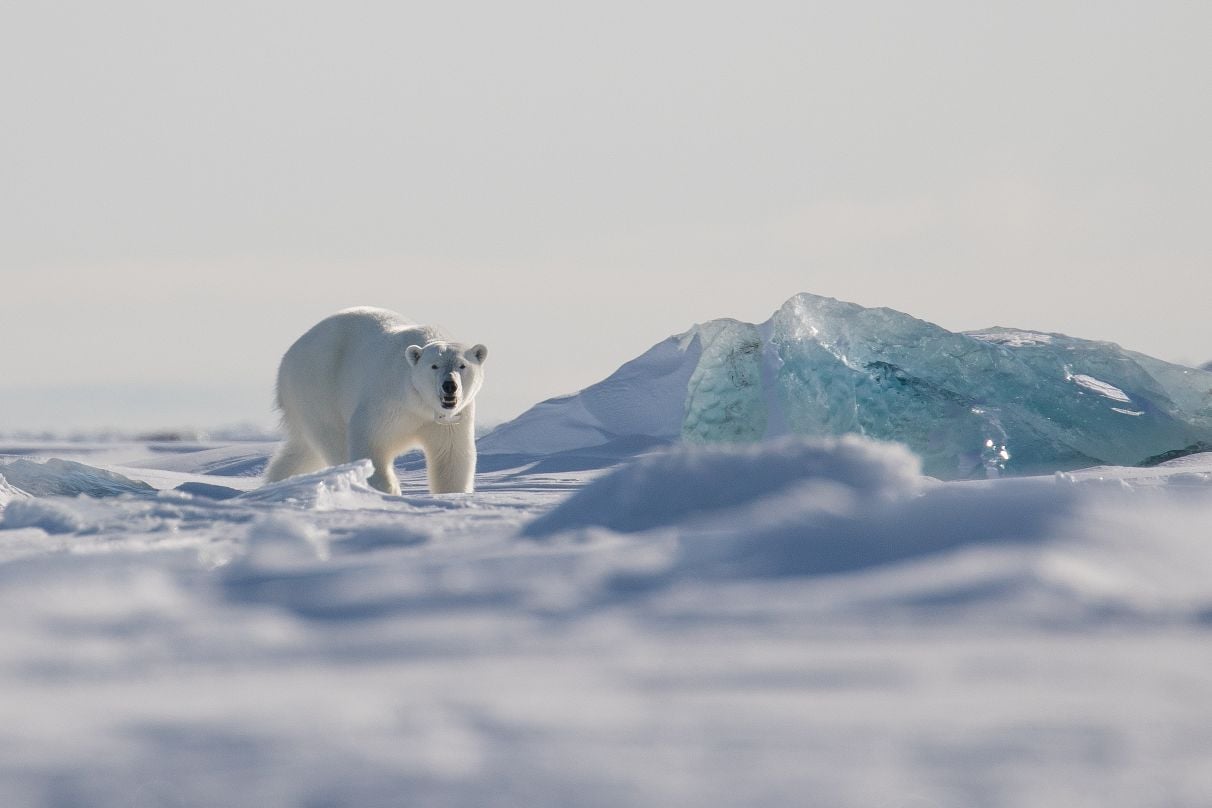
Birds in Norway
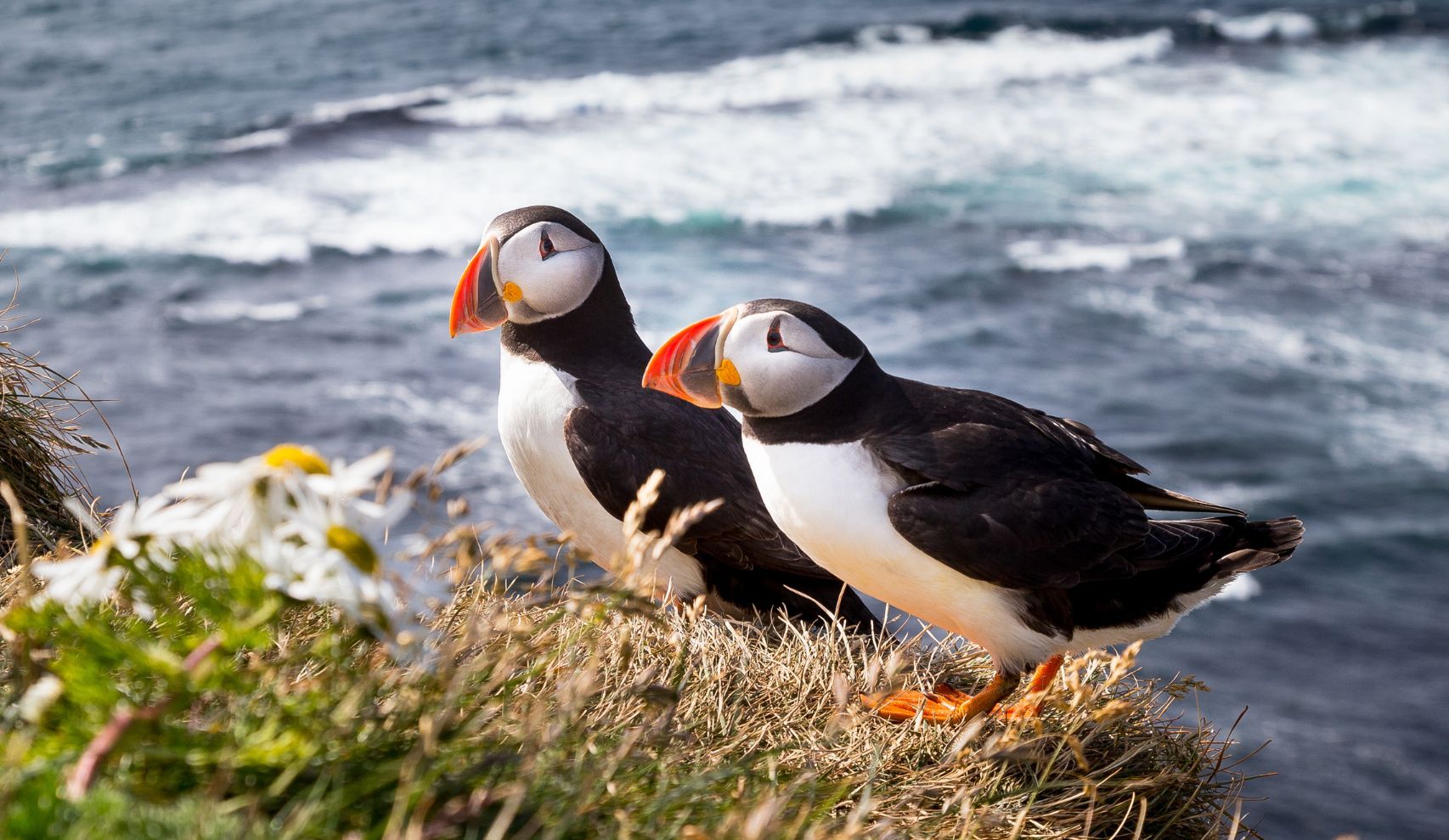
Puffin
The beautiful puffin is easily identified by its colourful beak. There are two main nesting sights for puffins in Norway, the island of Runde, and up in the Lofoten Islands. These animals are usually sighted either sitting on the rocks, or bobbing about on the waves. They spent most of their lives at sea, and in winter, their iconic peak is actually toned down to a dull grey.
Where to see: Runde, or Røst (in the Lofoten Archipelago).
When to see: Breeding season, from March/April to September.
White-tailed eagle
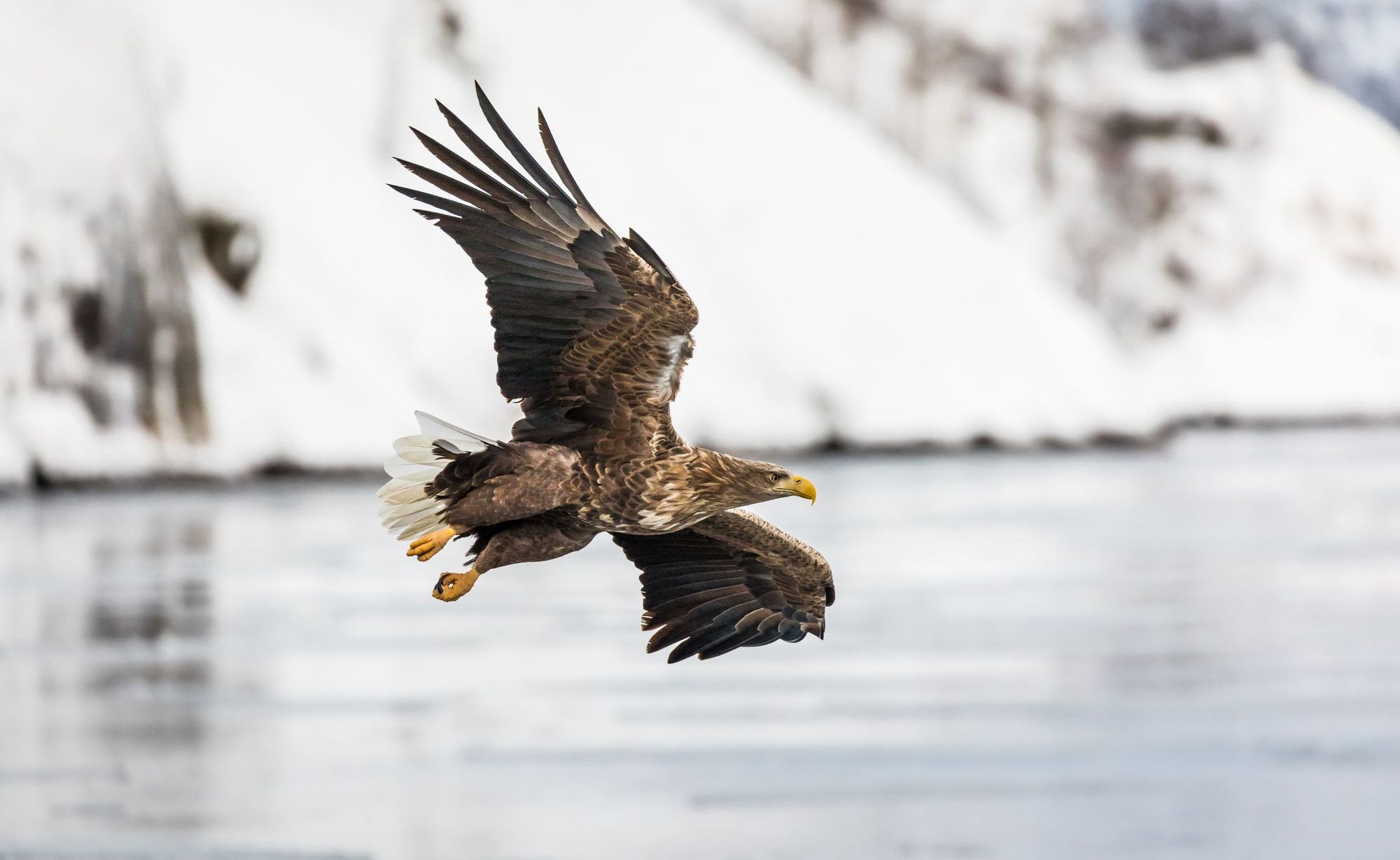
Norway is home to a strong population of white-tailed eagles, also known as sea eagles. These remarkable animals have a wingspan of between 1.8m and 2.4m, and if you’re lucky, you’ll be able to see one circling in the air, then swooping down to grab a fish out of the water. The animals were historically persecuted by humans, but a law in 1968 protected their numbers, which have since risen from below 800 breeding pairs to upwards of 3,500. That said, they continue to face threats, including from both humans and wind farm developments.
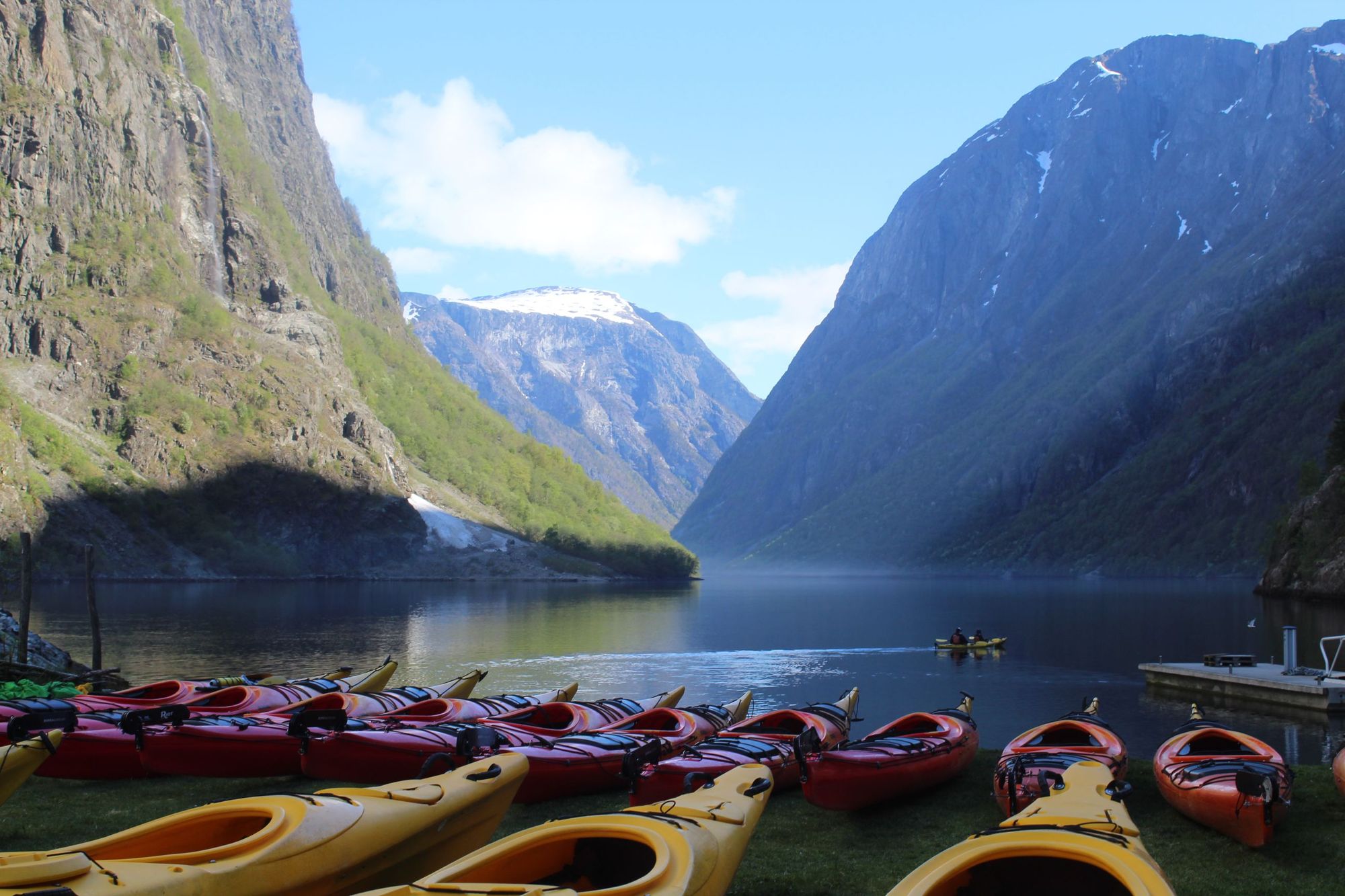
Where to see: The Lofoten islands.
When to see: Breeding season, from March/April to September.
Northern hawk-owl
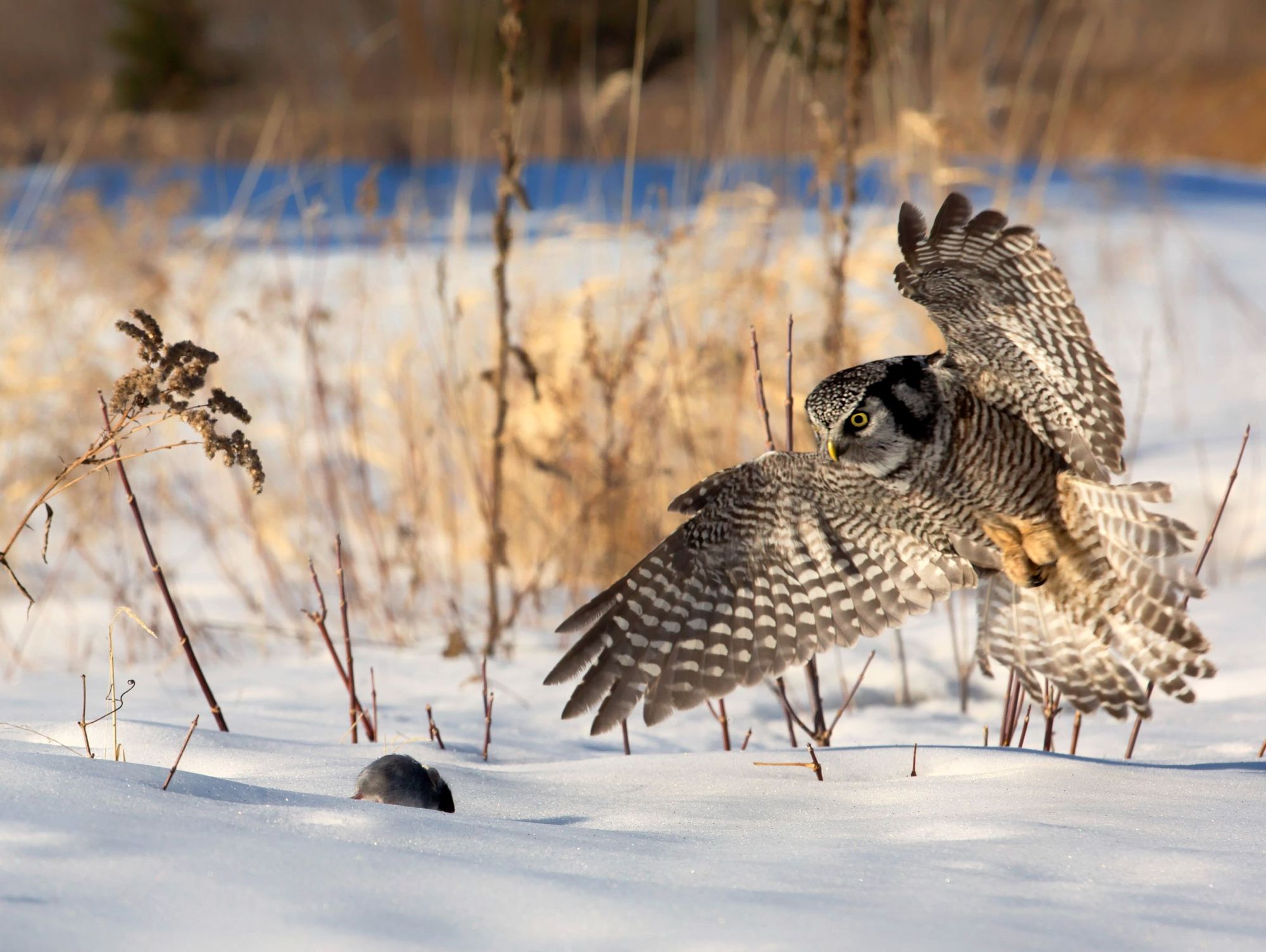
This beautiful bird has an unusually long tail for an owl, and piercing yellow eyes that are always on the lookout for voles and small rodents. They can travel huge distances in search of their prey. Two Finnish juvenile birds in one study were found almost 2,800km away from where they were born. The birds are tough to spot, but can be found in most of Scandinavia, and the fact that they’re one of the only owls to stay active during the day can help.
Where to see: Vesterålen, north of Lofoten.
When to see: Present year round, but the long daylight of summer can be useful.
King Eider
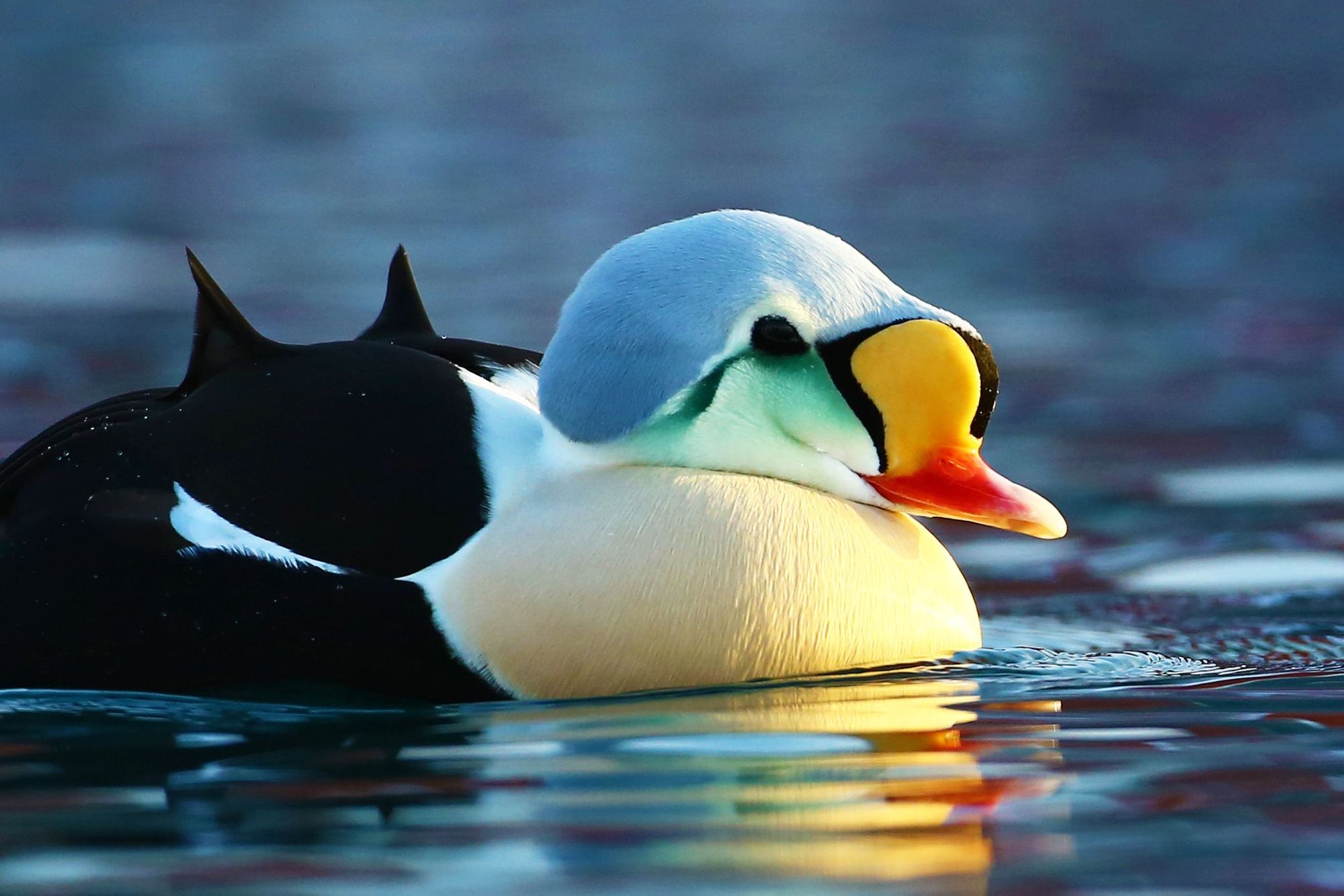
A lovely diving duck with a black and white plumage pattern and a bumpy, bright-orange beak, the king eider is one of the most colourful birds in Svalbard, and has a call like a cooing dove. These animals nest in the tundra and can be spotted out on sea beds, where it forages.
Where to see: Svalbard.
When to see: Breeding season, from March/April to September.
Rock Ptarmigan
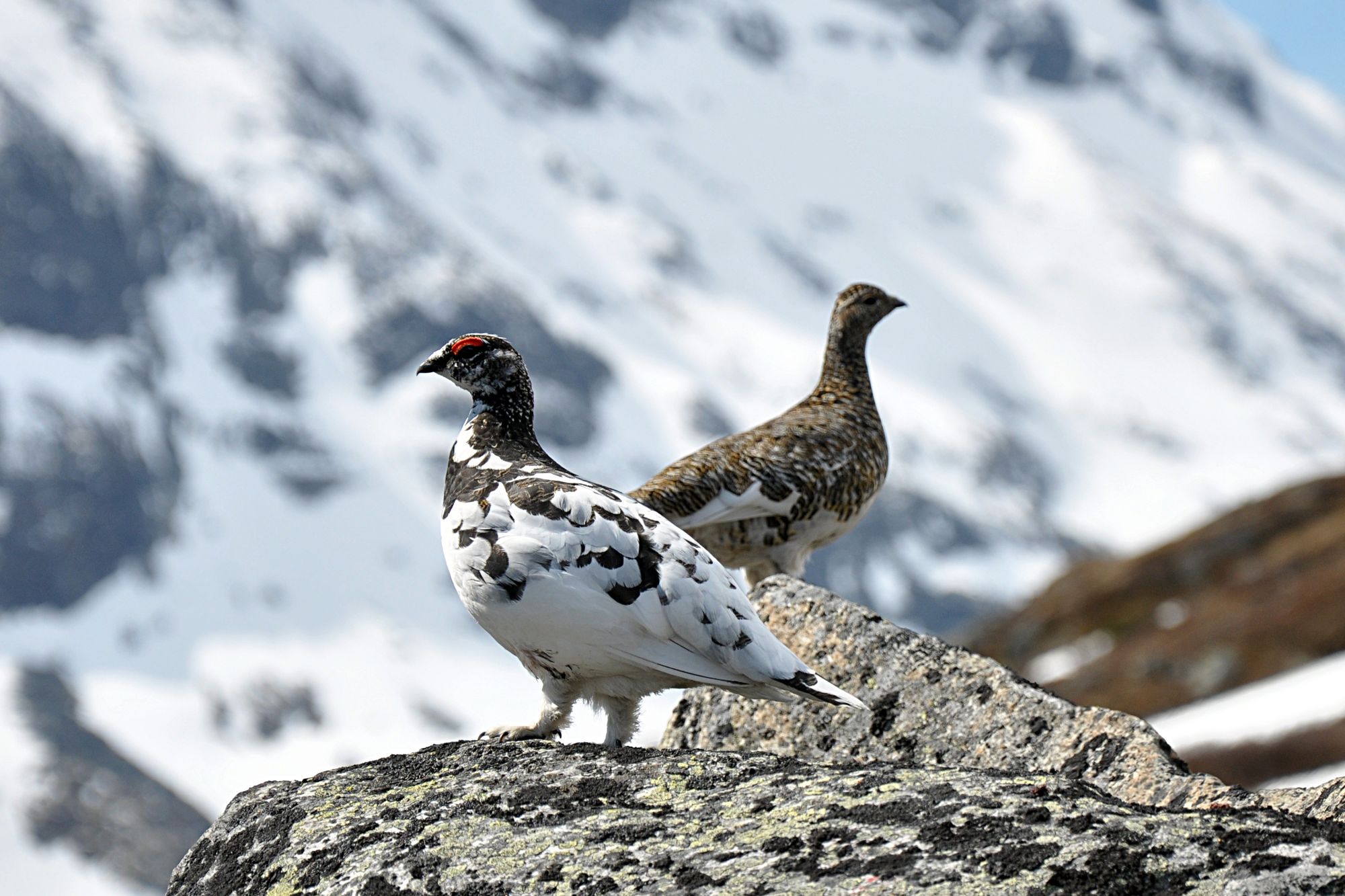
The ptarmigan has a habit of inhabiting particularly beautiful environments, and so it’s become many adventure’s favourite birds - often being spotted on mountain climbs in Scotland, or in far-flung, cold locations such as Arctic Norway. The bird can be hard to spot given that it blends into the surroundings with white, winter plumage, but you’ve always got a chance.
Where to see: Svalbard.
When to see: Year-round.
In the waters of Norway
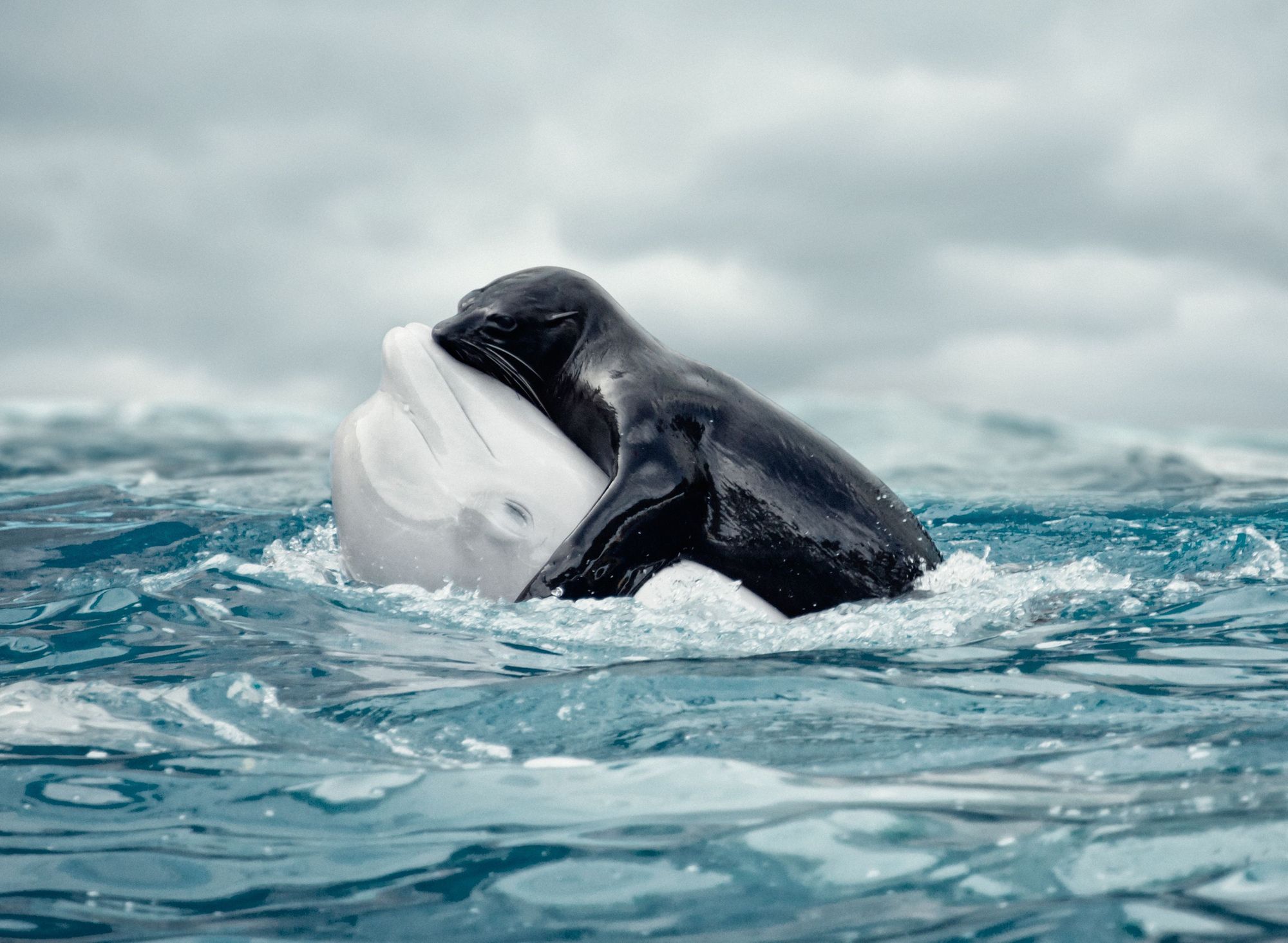
Beluga whale
There are beluga whales in Norway, but they’re rarely spotted to the south of the high Arctic. One particularly odd incident occurred when one such whale was spotted near the islands of Ingoya and Rolvsoya back in 2021. Fishermen noticed that the whale, now called Hvaldimir, was wearing a camera strap bearing the name of St. Petersburg, and so the whale was deemed to be a Russian spy. With the help of marine biologists in Norway, and a fishing town called Hammerfest, Vladimir recovered and headed out to water, to become self-sustaining.
Where to see: Svalbard.
When to see: November-January.
Orca
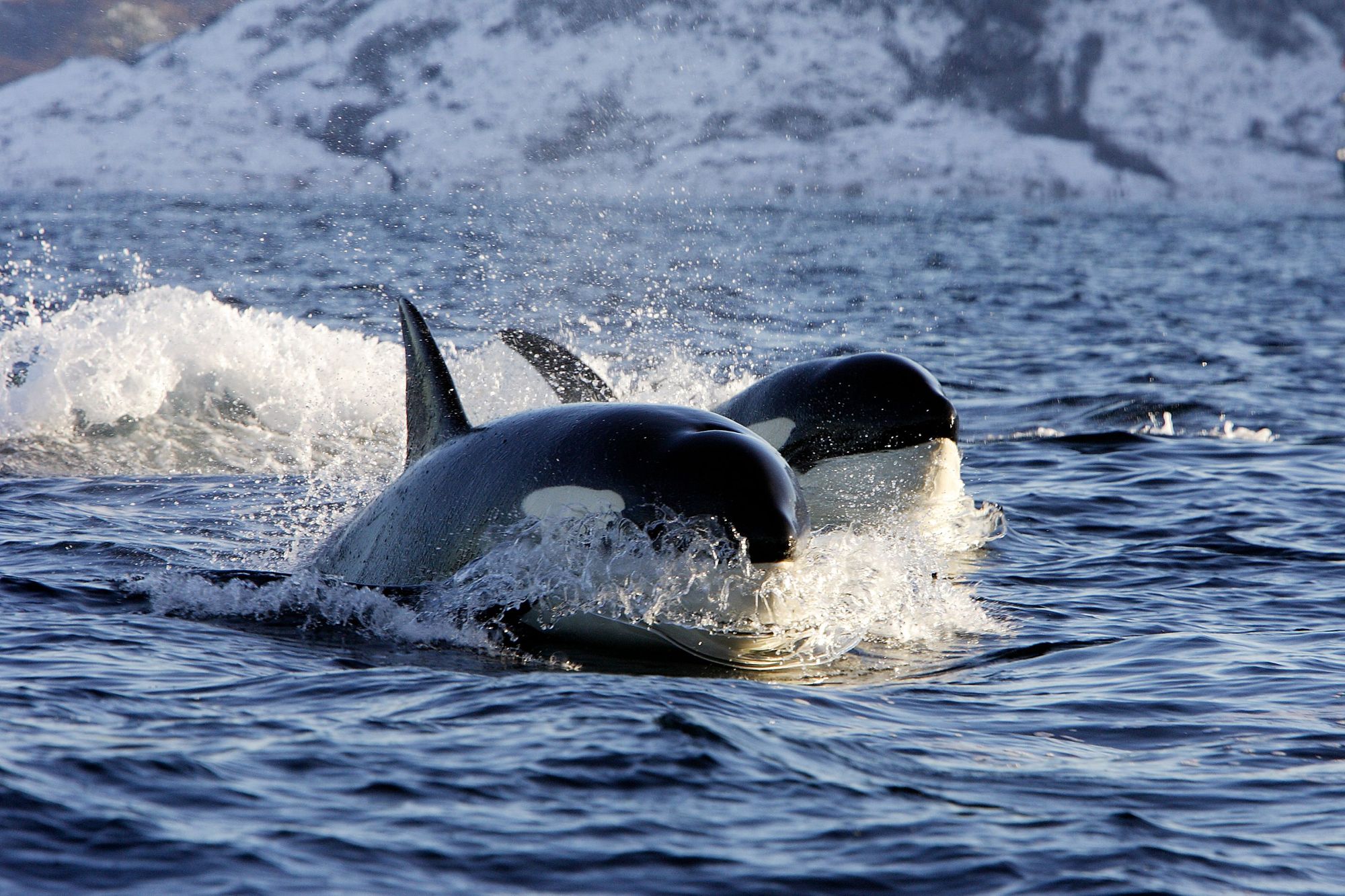
Also known as killer whales, these beautiful black-and-white beauties can be found drifting into fjords in the south, but they’re far more common in the north of the country. Orcas tend to wander based on food supply, so it’s difficult to guarantee a sighting. Catamaran trips depart Tromsø in the morning and can take you out to the areas they frequent. If you don’t see an orca, you still have a great chance of seeing other animals, from puffins to eider ducks to seals, otters, pilot whales and dolphins.
Where to see: Tromsø.
When to see: November-January.
Seals
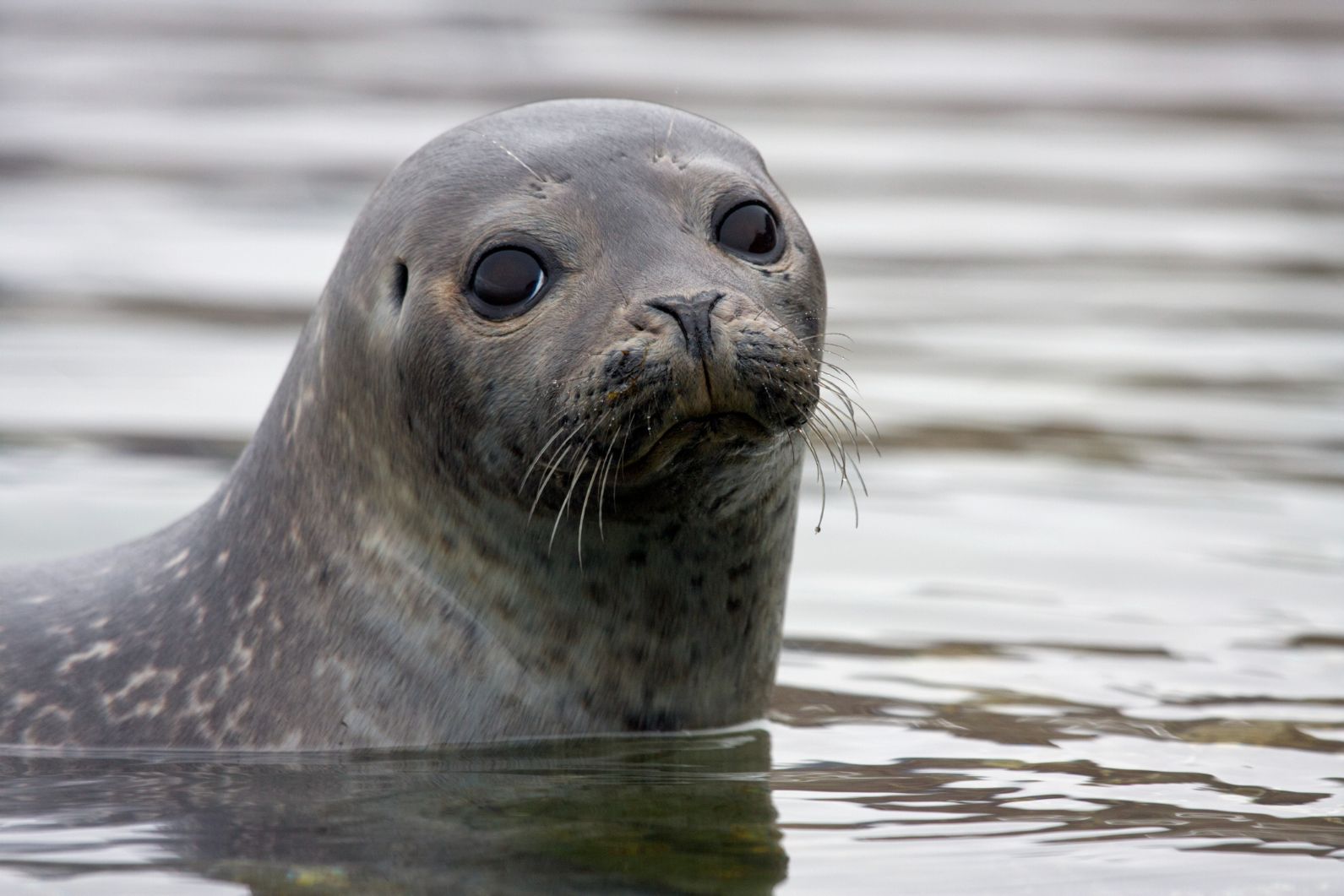
Spotting a beluga whale or orca in Norway is possible, though ambitious. Spotting seals on the other hand, is a lot easier. You can find harbour or grey seal colonies along the coast of Norway, lounging on rocks or bobbing about in the water. There are around 10,000 seals in total in Norway, ranging from those who live in the fjords to the most northernmost seal population in the world, which is on the west coast of Svalbard, at Prins Karls Forland. In contrast, there are frequent seal safaris from the city of Stavanger, in the southwest of Norway.
Where to see: Stavanger.
When to see: Year-round.

Sperm whale
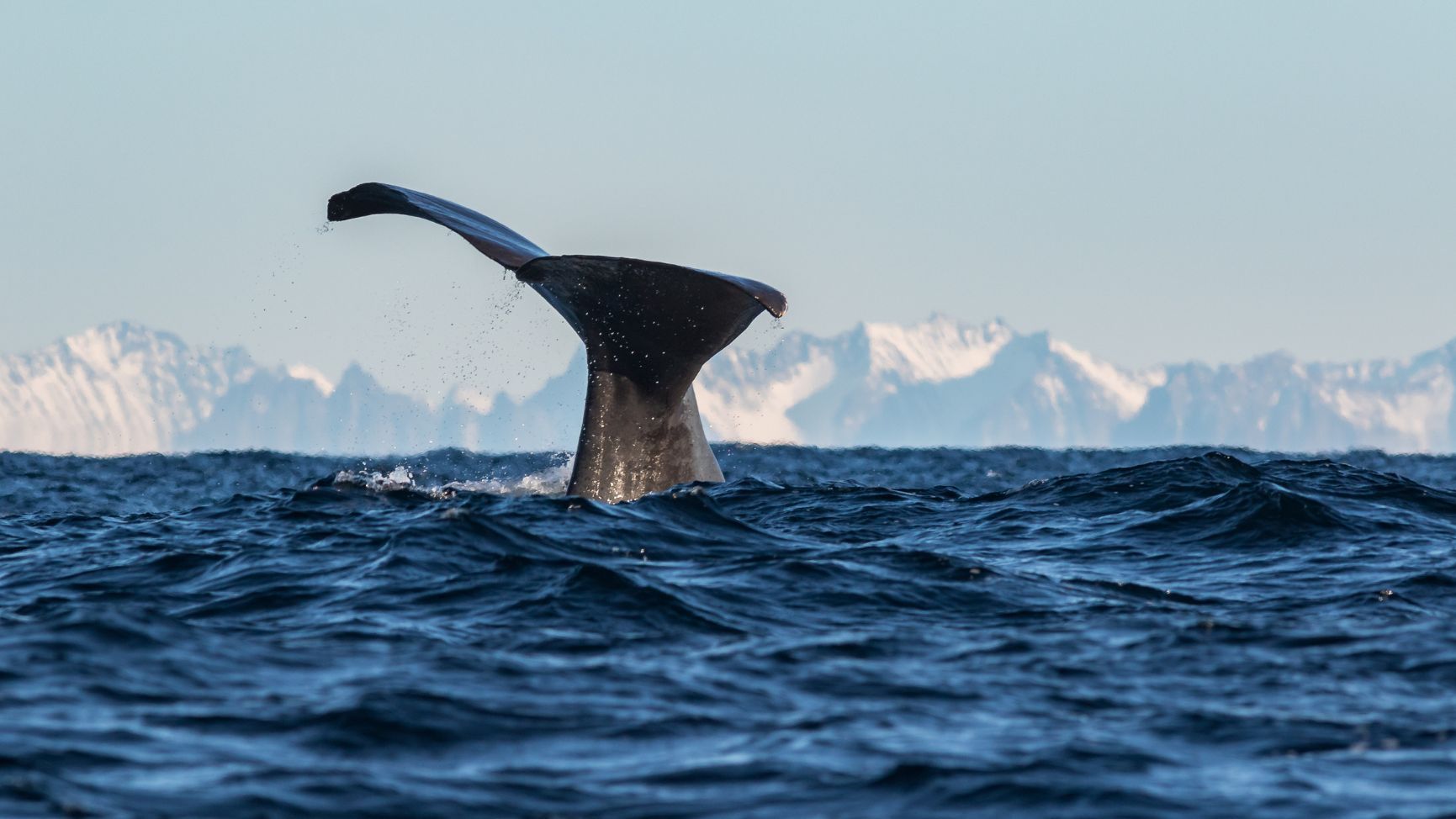
These are the largest toothed whales on the planet, weighing up to 50 tonnes. To give some perspective, that means that one sperm whale weighs about the same as 700 people. These brilliant animals have the largest brains of any animal on the planet. There are various opportunities to see these whales in northern Norway.
Where to see: Tromsø, the Lofoten Islands or Svalbard.
When to see: November-January.
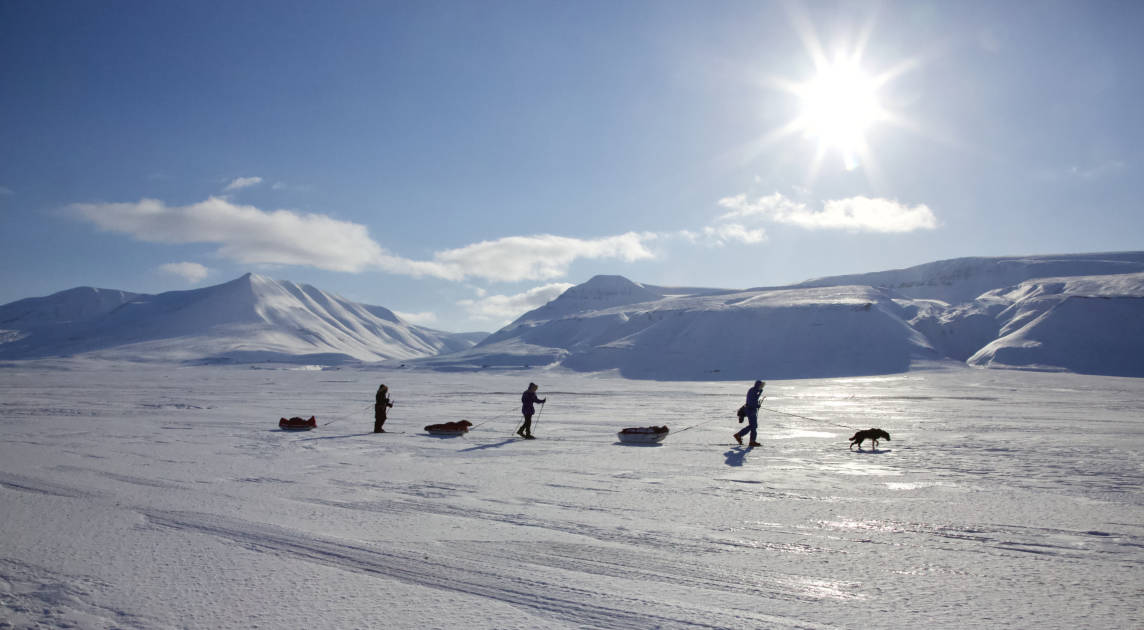
White-beaked dolphins
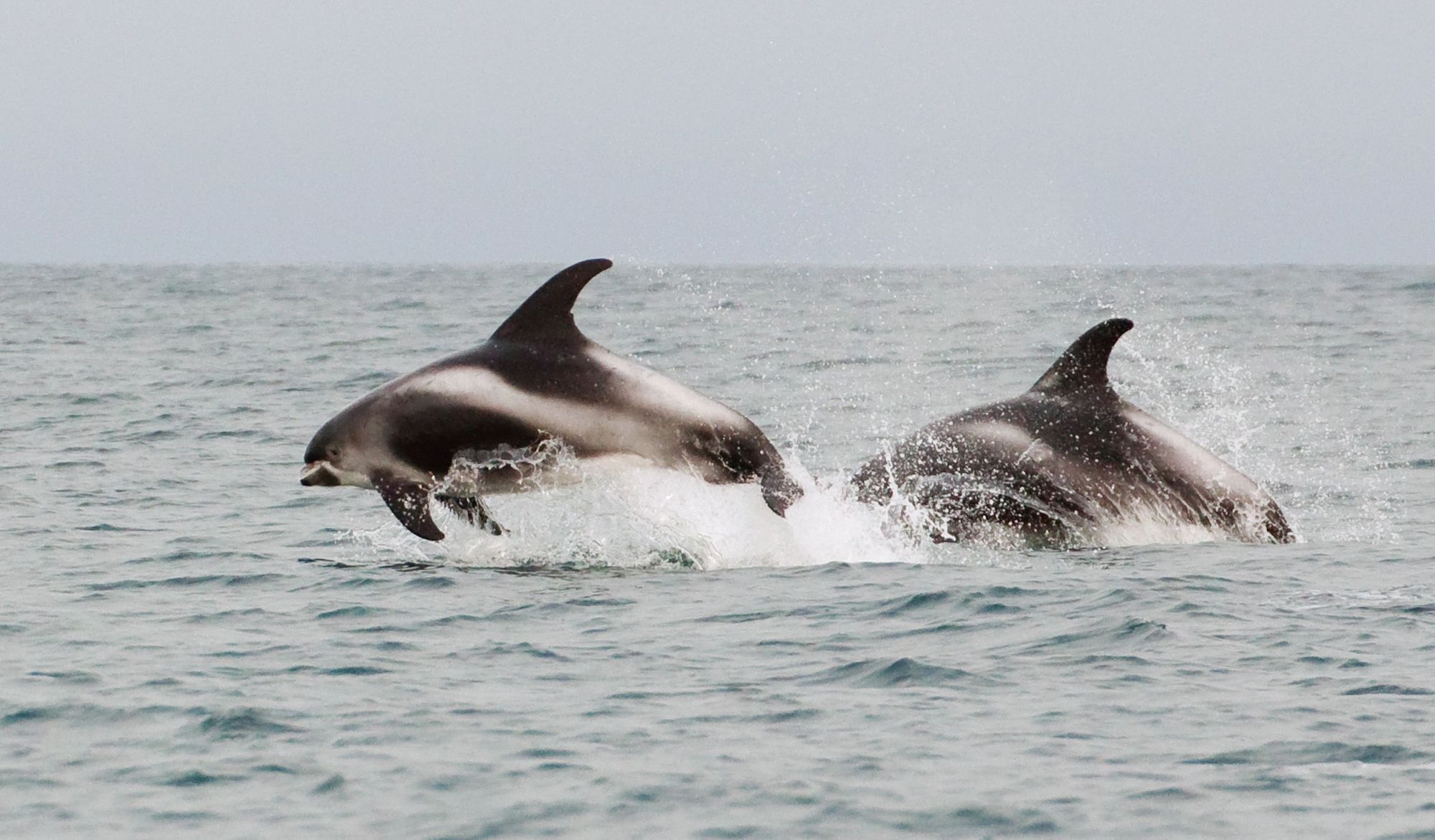
Everyone loves a dolphin, and if you head out whale watching in Norway, then there’s a good chance you’ll see some dolphins too. Dolphins are chatty animals, said to have one of the most sophisticated languages of clicks, whistles and squeaks in the animal kingdom. You can see dolphins in a variety of places in Norway,
Where to see: Vesterålen.
When to see: Summer.
Are These Animals All Native to Norway?
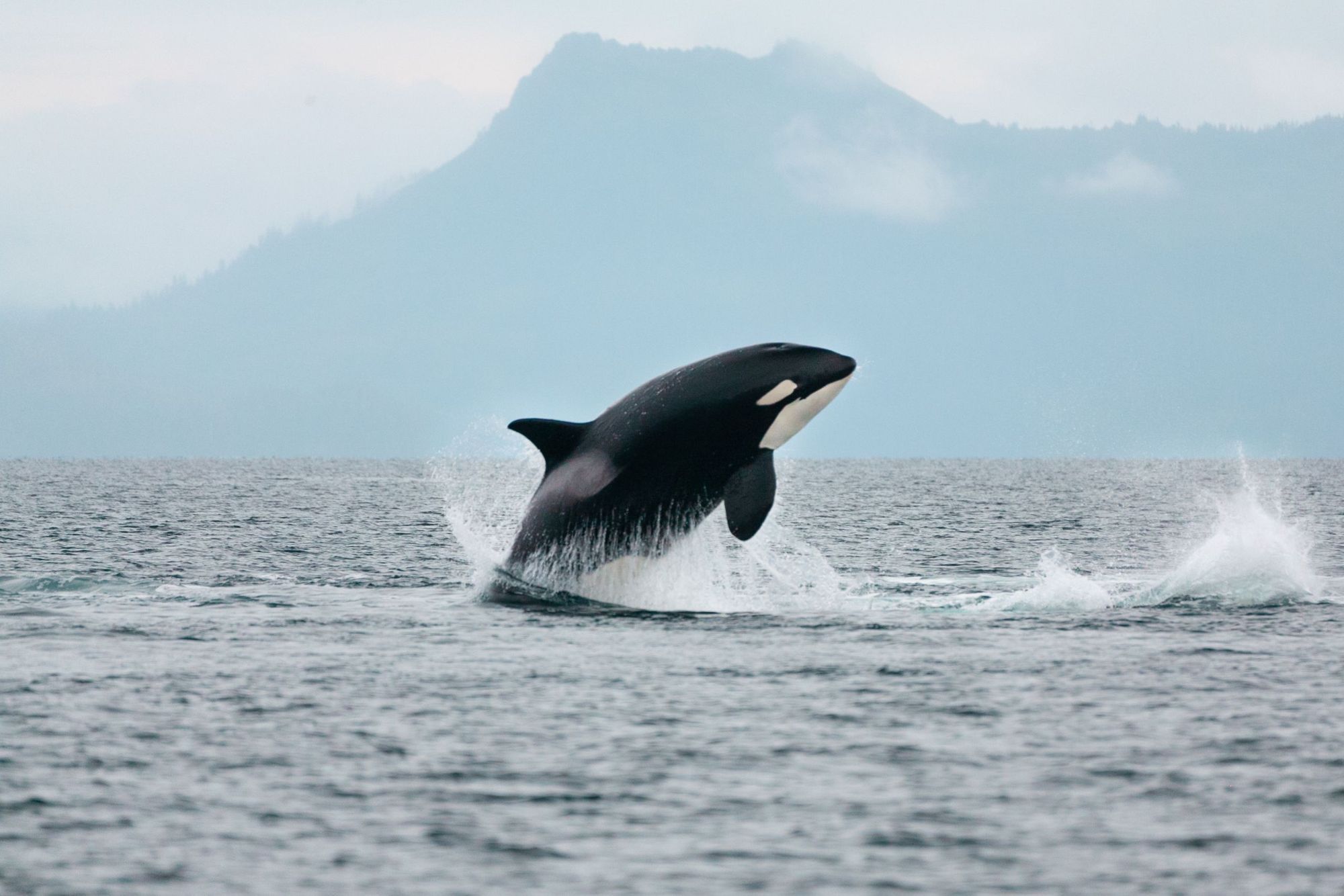
All of these animals listed above are native to Norway, from arctic foxes, polar bears and puffins to musk ox, sea eagles and sperm whales. However, the wolf population was mostly culled in Norway sometime ago, and so most wolves in the country now arrive by crossing the Swedish border (and those wolves tend to have migrated from Russia via Finland).

What Wildlife Lives in the Norwegian Fjords?
Many people who head to Norway will be heading straight to the fjords. There are brilliant opportunities for animal spotting in the fjords which, let’s remember, span most of the country’s coast, from the south of Norway right up to Tromsø and beyond.
On a kayaking trip in the Nærøyfjord, keep your eyes out for seals, sea eagles and even the occasional orca, though this is rare. You can often spot a variety of dolphins and fish species.
Inspired? Check out our range of adventure holidays in Norway!

